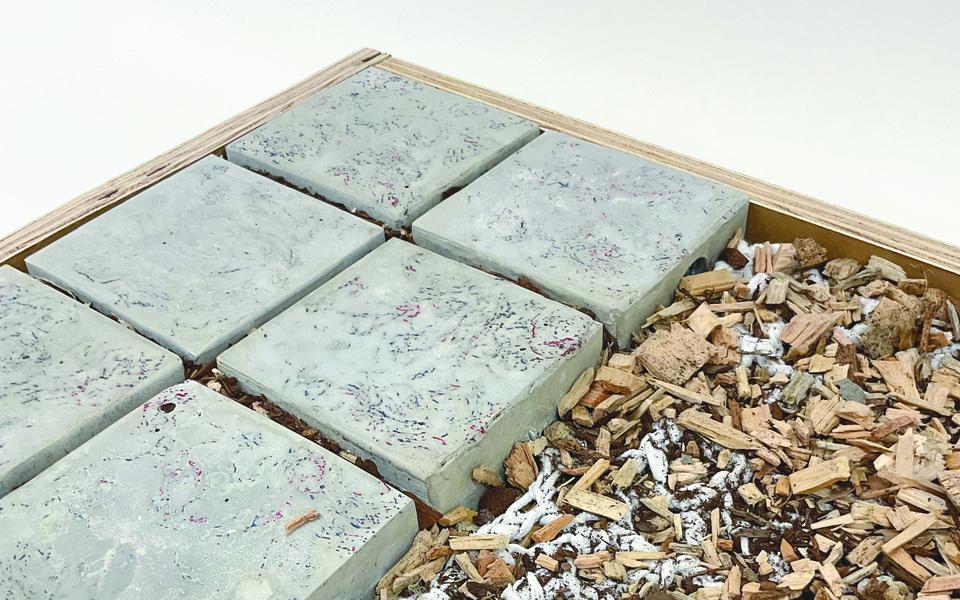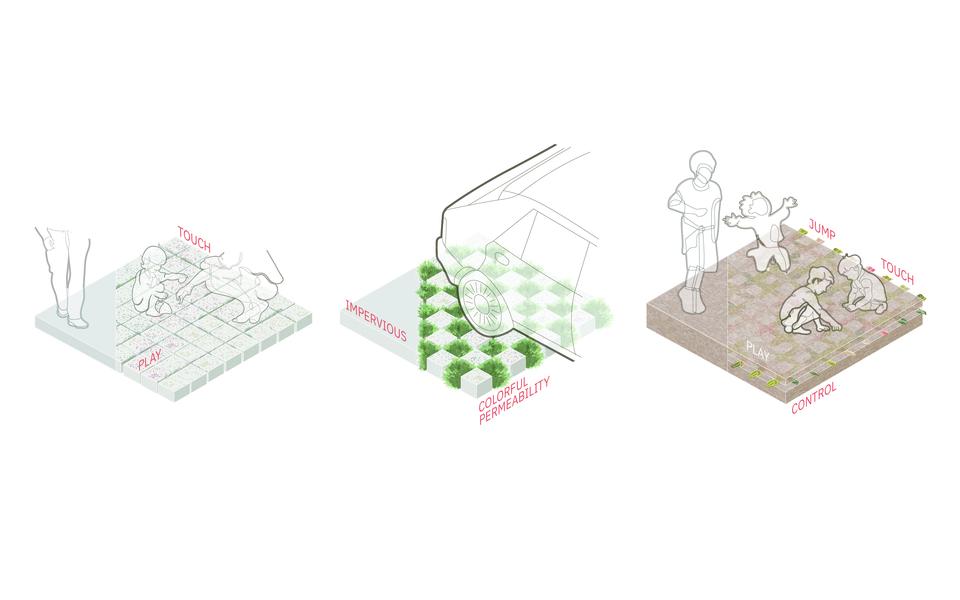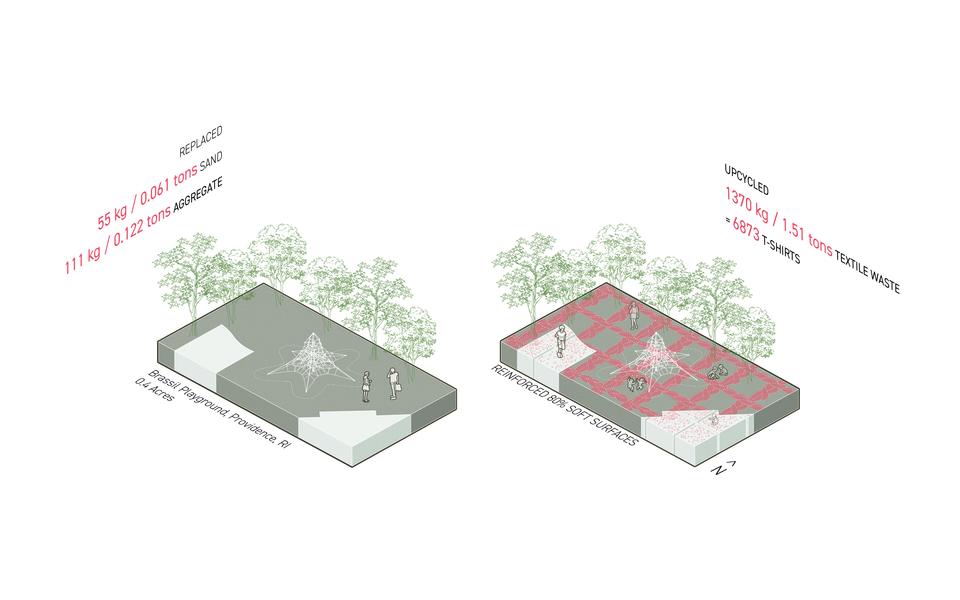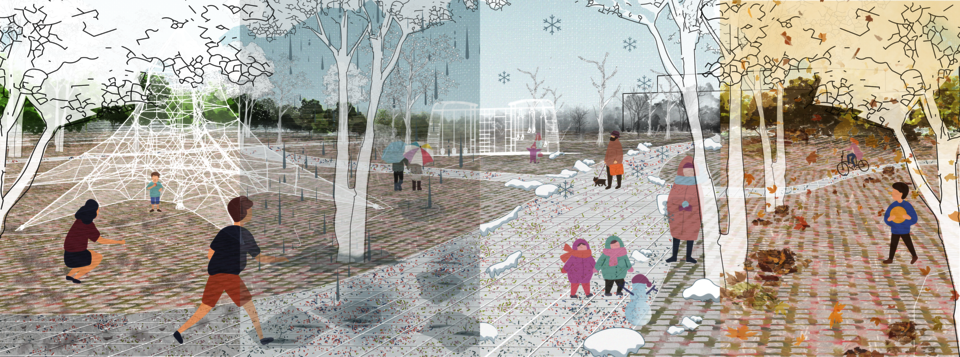Image
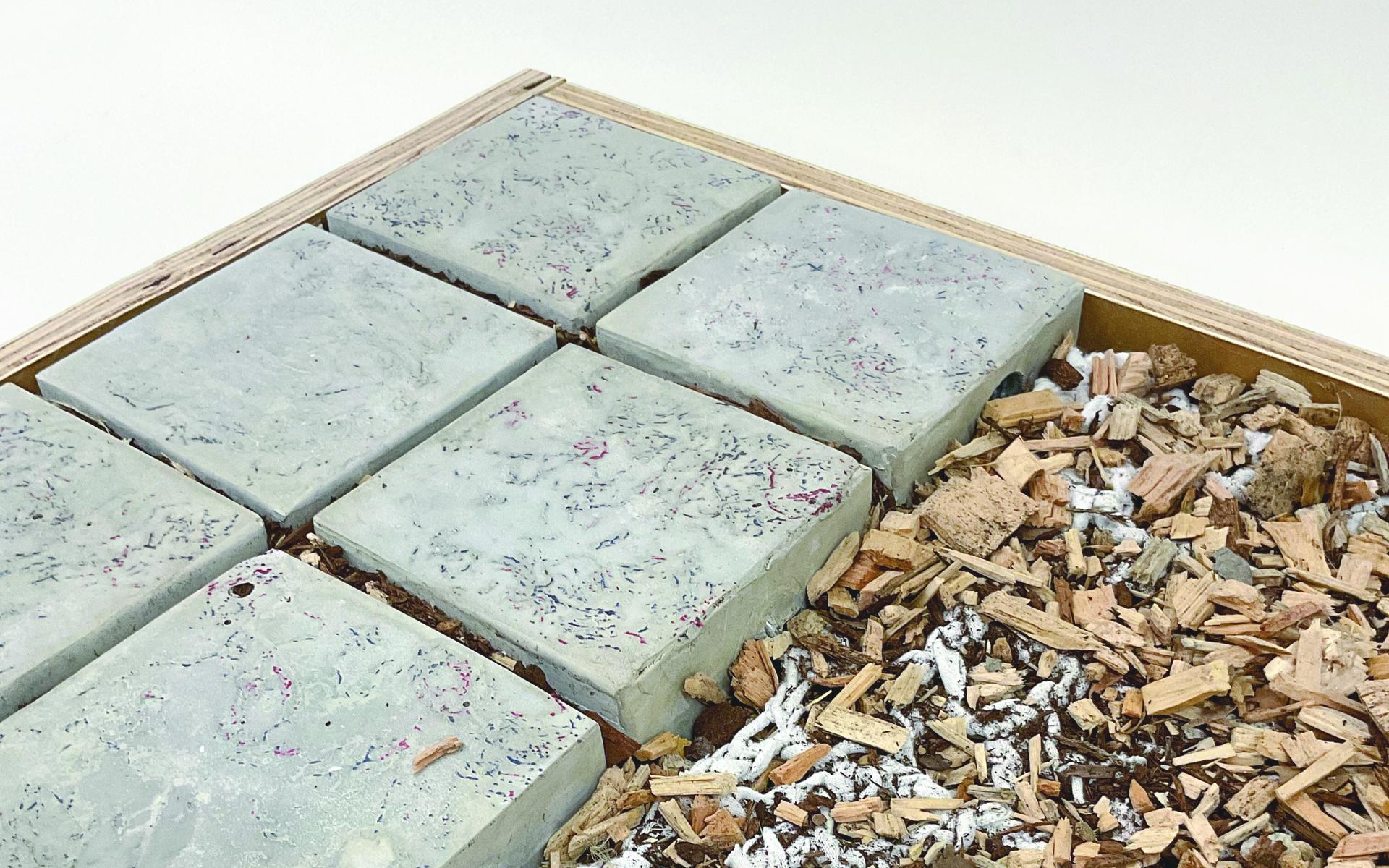
Wenlin Yang
The Urban Fabric: Upcycling Textile Waste into Raw Material for Urban Ground Surface Design
Landscape surface materials have the opportunity to ground us in our experience and use of materials in the built environment. Surface materials describe the physical textures of the urban areas and include soft and hard landscape solutions, streetscapes, and roads. In modern landscape design, turf, concrete, asphalt, brick or rubber are the most common materials for urban parks or playgrounds. However, the unlimited use of, and lack of awareness about urban landscape surface materials has become a common trend. This “take-make-discard” culture has negatively impacted our environment ecologically, economically, and socially.
This thesis study focuses on upcycling textile waste into a recyclable, degradable, and decomposable material for public pavements, especially in public parks and playgrounds. It aims to understand the larger landscape and ecological impacts of existing materials in comparison to a new set of proposed materials, while also revealing the potential opportunities of utilizing circular second-hand material strategies.
The material exploration combines research and critique of existing surface materials with an investigation of recycling strategies of textile materials. It then proposes new types of hybrid surface materials that embrace weathering by adding the degradable characteristic of textiles as a new standpoint for thinking about ground surfaces. Ultimately, this research studies the benefits and negative impacts on the environment of public parks from the perspectives offered by this new set of proposed materials, as well as their social interactions and economic conditions.
Image

New Urban Fabric Concept
2021
The exploration of the bio-life process for the used textile into a new urban surface material.
Image
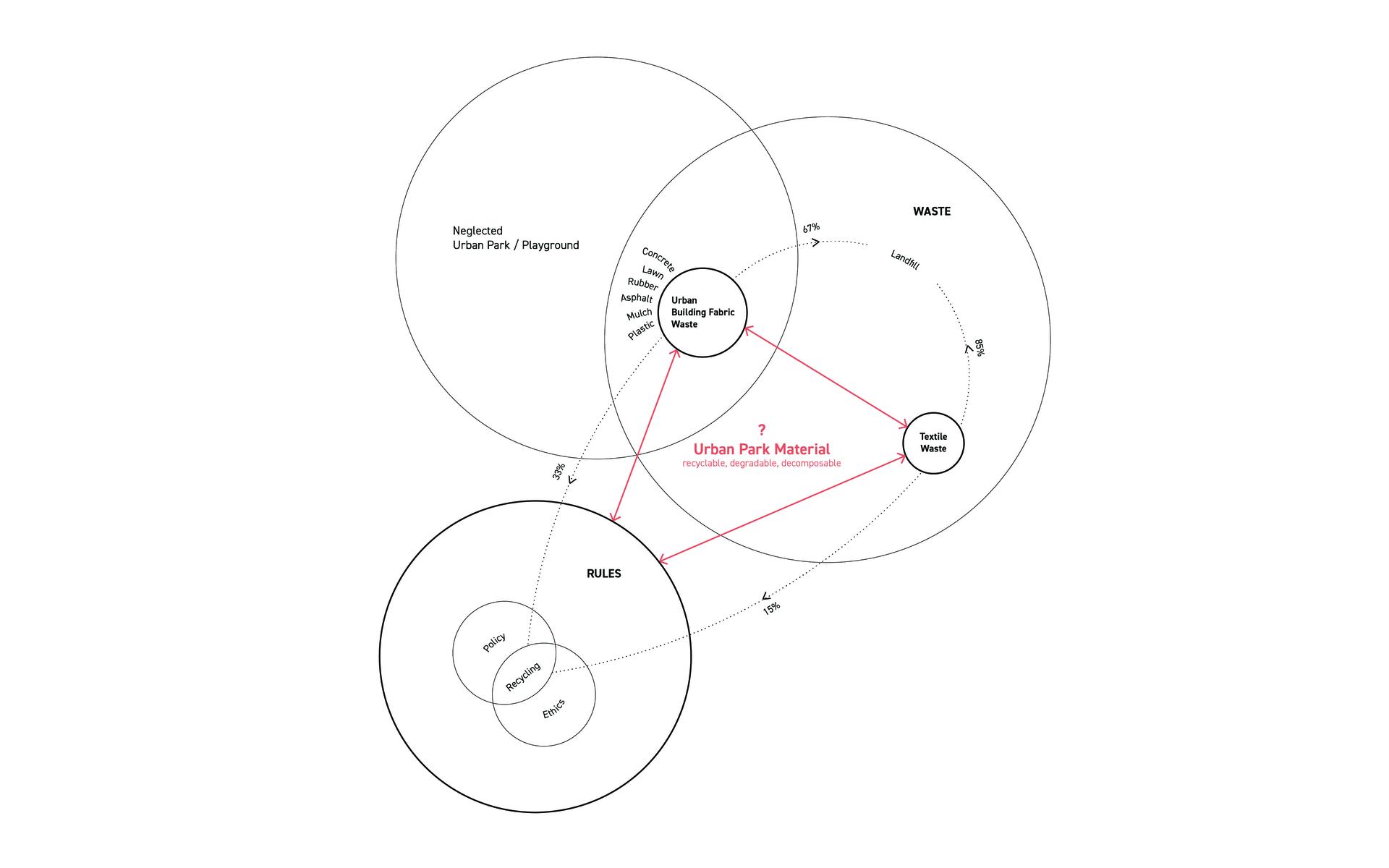
The Relation of Waste Matters under Social Rules
2021
This thesis study focuses on developing “the new material,” a product made by upcycling textile waste, which is able to replace existing unsustainable surface materials used in public parks and playgrounds, in order to improve the local environment ecologically and economically.
Image

The invisible, visible, and further impacts of Urban Building Fabric
2022
How can we view the urban landscape architecture through the role of surface material objectively?
Image
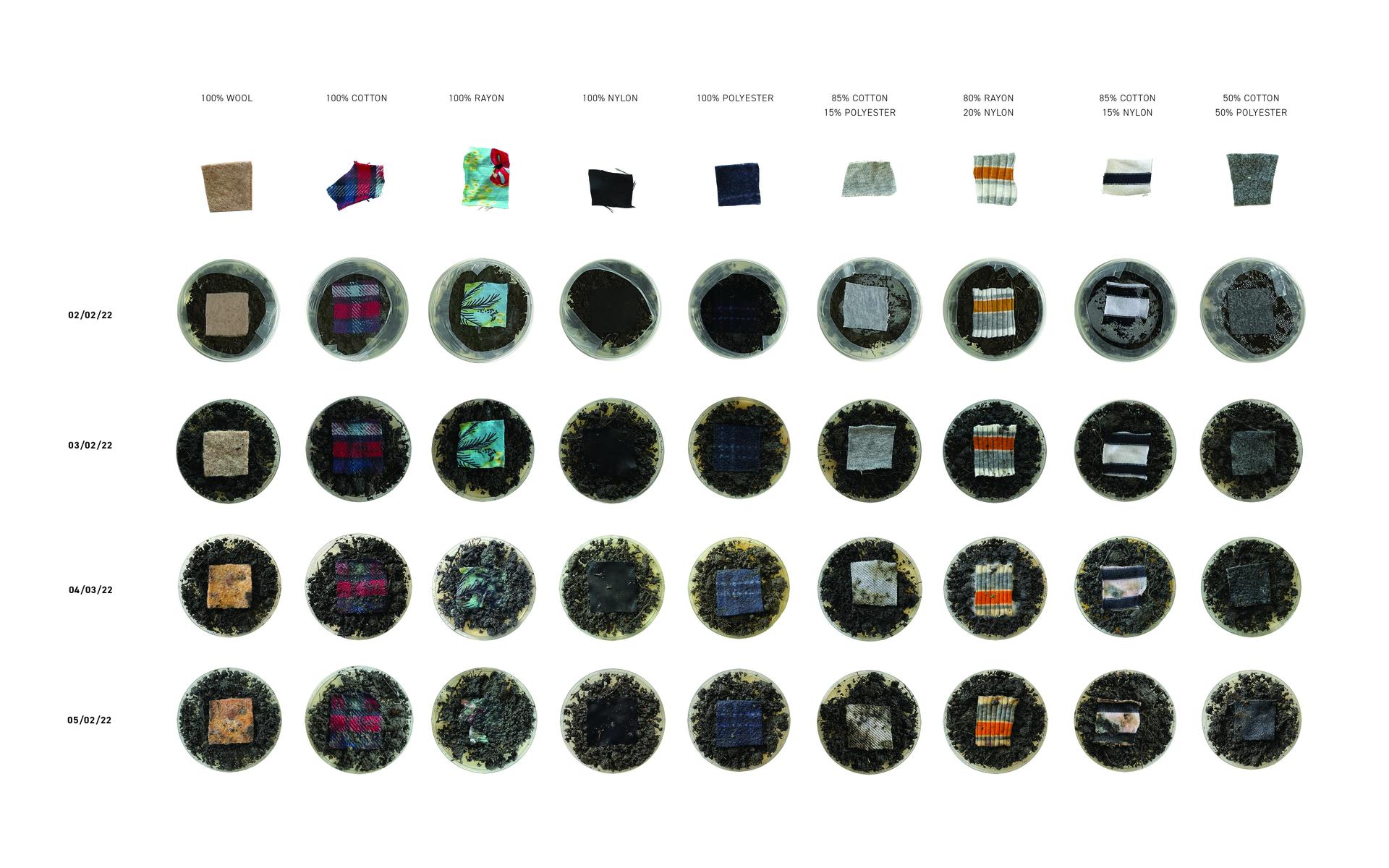
Indoor Fabric Control Tests
2022
In order to control the temperature of fabric testing, there are three sets of experiments that are tested indoors. The Petri dishes contain agar, the same soil from the outdoor testing location, and the testing fabrics. Two sets will be sealed by the parafilm for fungi growth; one set will be open for the access of oxygen.
Image
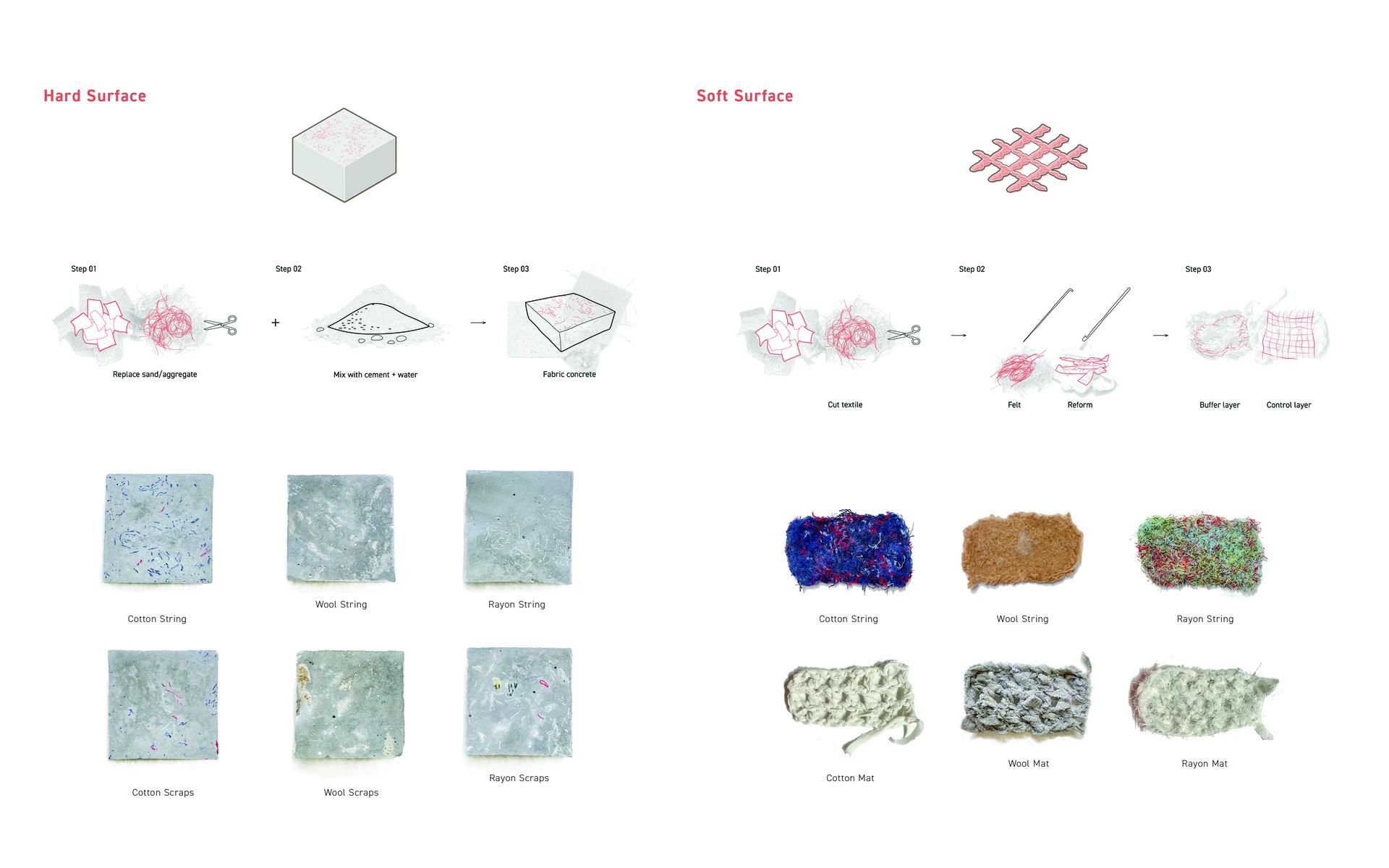
Investigation of the New Materials
2022
This research has been directed to seeking the most approachable material-making methods. Through physical and chemical material testing, the investigation strategies are engaging in transforming natural, synthetic, or blended fabrics into new materials. Textile waste would either replace certain materials such as sand in concrete or be used alone as a soft material on or under the ground surface.
- Architecture
- Ceramics
- Design Engineering
- Digital + Media
- Furniture Design
- Global Arts and Cultures
- Glass
- Graphic Design
- Industrial Design
- Interior Architecture
- Jewelry + Metalsmithing
- Landscape Architecture
- Nature-Culture-Sustainability Studies
- Painting
- Photography
- Printmaking
- Sculpture
- TLAD
- Textiles
